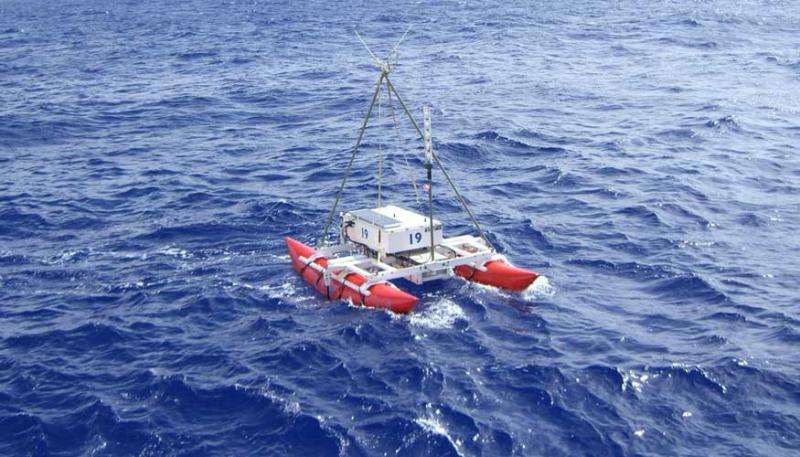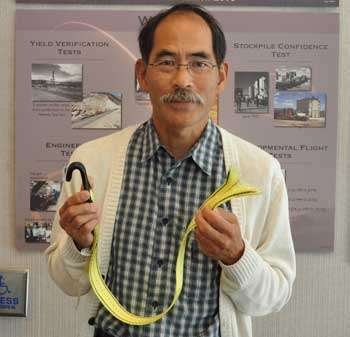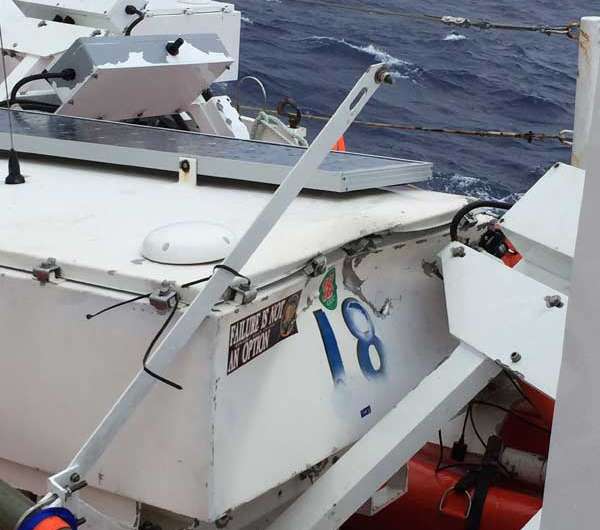Despite heavy storms and rough seas, team captures missile flight data

"Everything was very successful, but this was the toughest mission we've ever supported." That was the assessment of Steve Yakuma, LLNL's ICBM flight test director, when asked to sum up his team's support of the recently completed GT214 and GT215 missile flight tests off of Saipan in the South Pacific.
ICBM test flights are regularly launched from Vandenberg Air Force Base to a target location in the southern Pacific Ocean where diagnostics-laden rafts are deployed to record the data from the missile splash.
Livermore was responsible for verifying the performance of the instrumented reentry vehicles employed in these two tests, using the LLNL Independent Diagnostics Scoring System (LIDSS). Designed, fabricated and fielded by an LLNL team, the LIDSS data acquisition systems collect data from flight test reentry vehicles landing in the deep ocean. The systems include high-speed cameras and video cameras, neutron detectors and hydrophones installed on over a dozen raft-mounted, GPS-controlled sensor platforms.
A number of factors made this mission especially challenging for Yakuma and his team. First and foremost was the unseasonable heavy weather, as the Navy ship the team was deployed on had to ride out tropical storm Bavi on the way to the deep-ocean test site, and then encountered super typhoon Maysak on the way back.
The storms produced 20- to 30-foot waves, violently tossing the 330-foot Navy vessel. "The instrument rafts suffered a lot of damage from tropical storm Bavi, which required us to rapidly evaluate and make repairs in time for the missions," Yakuma said. "We had to use the majority of our spare parts. Additionally, another team member and I were severely seasick for two-and-a-half days. Even a seasoned Navy crew member got sick, for only the third time in his career."
Adding to the challenge was the need for a fast turnaround between the back-to-back flight tests (a first for an extended range mission) and a smaller-than-usual LIDSS on-ship team to support the effort. "We usually have five or six LLNL personnel to perform these missions, but had only three this time, and one was newly hired," Yakuma said.

Finally, the combination of circumstances meant that some team members were away from home for seven weeks, with three of those being at sea. Despite these and other obstacles and hardships, Yakuma and his team collected 100 percent data for both tests, helping to ensure the continued success of these missions for the National Nuclear Security Administration, the Department of Defense and the nation.

Provided by Lawrence Livermore National Laboratory




















